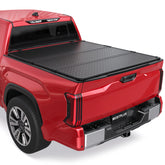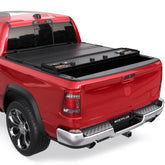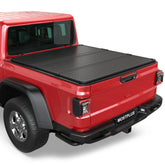LED Headlight: How it works, advantages and comparison
The LED headlight is a type of light that uses light-emitting diodes. These headlights are said to provide better illumination and less dazzle other drivers. However, they are very expensive and cannot be repaired: the entire optical compartment must be replaced.
What are LED headlights?
Your car's headlights are designed to illuminate the road at night or in poor visibility conditions (rain, snow, fog, etc.), but they also make it easier for other road users to see you. However, these headlights can have different light sources and bulbs.
These include LED headlights. LED (Light-Emitting Diode) bulbs, also known as electroluminescent bulbs, are a type of light bulb that is based on the electroluminescence principle. This system uses light-emitting diodes.
LED headlights have been in widespread use since the early 2000s, especially since 2004. In 2006, the Lexus LS became the first car to use LED headlights as standard equipment. Several automakers have followed suit, among them Audi, Cadillac and Mercedes.
In general, LED headlights are still mainly used in high-end cars. This is due to the fact that they are more expensive than other types of lighting.
Did you know that? Mercedes and Audi have even developed computerized adaptive LED headlights. In particular, the system can automatically avoid dazzling other vehicles while still illuminating the areas around them. These LED headlights are divided into a large number of individual diodes.

What are the pros and cons of LED headlights?
LED headlights are still used on relatively few vehicles because they are more expensive. However, they have a number of advantages:
- They provide better illumination;
- They dazzle less;
- LED headlights last much longer;
- LED headlights can be used as daytime running lights;
- LED headlights use very little energy.

In short, LED headlights make the road safer for you and others. They are less likely to dazzle other drivers and give you better visibility when driving at night or in poor visibility conditions.
However, they also have a number of disadvantages. The first, of course, is price. With a conventional headlight, you can replace the bulb yourself. But LED headlights are sealed beam, so you have to change the whole optic.
On paper, LED headlights are also said to last much longer than other headlights. However, this does not correspond to reality, as the German automobile association ADAC has pointed out. According to the association, the average lifespan of an LED headlight is fifteen years.
According to the ADAC, the average age of a German car before it is scrapped is 18 years, which means that the headlights will have to be replaced during the life of the vehicle. As explained above, this means replacing the entire headlight unit, not just a single bulb.
Therefore, the major weakness of LED headlights is the difficulty of repairing or replacing them, and the price tag that comes with it. It should also be noted that while LEDs reduce power consumption compared to halogen bulbs, they also create more electronic waste.
What to choose: Halogen, Xenon or LED headlights?
Halogen, the most common
Recognizable by its small gray cap and base, the halogen bulb is the most common, the least expensive, and the cheapest to manufacture. Halogen bulbs are easy to replace, although on some car models they can be a nervous wreck if you don't have the fingers of a fairy... Technically, halogen bulbs consist of a tungsten filament encased in glass to keep the filament from degrading too fast. This glass is filled with a gas (bromine and iodine). An electric current is passed through it to heat the filament (melting temperature of tungsten: 3,410°C), causing it to glow (range 150 meters). Unfortunately, overheating causes the filament to break. Nevertheless, the life of a halogen bulb can easily reach 2,000 hours. Halogen lamps consume a lot of energy and should be treated carefully, as even the smallest scratch can be lethal.
Expensive Xenon headlights
First introduced in 1991 on the BMW 7 Series, the xenon headlight produces a bluish light that is quite different from the yellowish halo of the halogen bulb. What's more, although it uses less energy than a halogen headlight, the intensity of a xenon headlight is 3,200 lumens, compared with 1,600 lumens for a halogen bulb. A xenon headlight consists of two electrodes enclosed in a glass cage containing xenon gas. Operating a Xenon headlight is often compared to operating a neon light.

When an electric current (25,000 volts) is passed between the two electrodes, an arc is formed, emitting a white light. The maintenance of the arc is by means of an 85 volt AC voltage. Because of this bright light for oncoming drivers, xenon headlights (range 220 meters) are equipped with a height corrector and a system for cleaning the optical compartment. The latter is necessary because the slightest trace of dirt or even snow can have a negative effect on the light flow. Xenon lamps last longer and provide better illumination than halogen lamps. On the other hand, they are very expensive due to the scarcity of xenon.
In a nutshell, xenon headlights use a discharge lamp instead of an incandescent bulb. This gives it a more powerful light, recognizable by its particularly white light with bluish reflections. Like LED headlights, xenon headlights are more expensive than conventional headlights. This is because xenon headlights require a high-voltage power supply. Their main disadvantage is that they are very dazzling to other drivers. LED headlights do not have this problem.
But xenon headlights also use a rare gas that glows with high voltage, which consumes more energy. They have a tendency to heat up, which can damage the headlight prematurely. They are neither very environmentally friendly nor very safe on the road.

Now you understand the pros and cons of LED headlamps! It's also worth adding that they look better than xenon headlights, which are starting to go out of fashion. To change your LED headlights, don't hesitate to visit our website.
Featured Products
- $479.99
$499.99- $479.99
- Unit price
- / per
- $549.99
$549.99- $549.99
- Unit price
- / per
- $489.99
- $489.99
- Unit price
- / per
- $469.99
$489.67- $469.99
- Unit price
- / per














